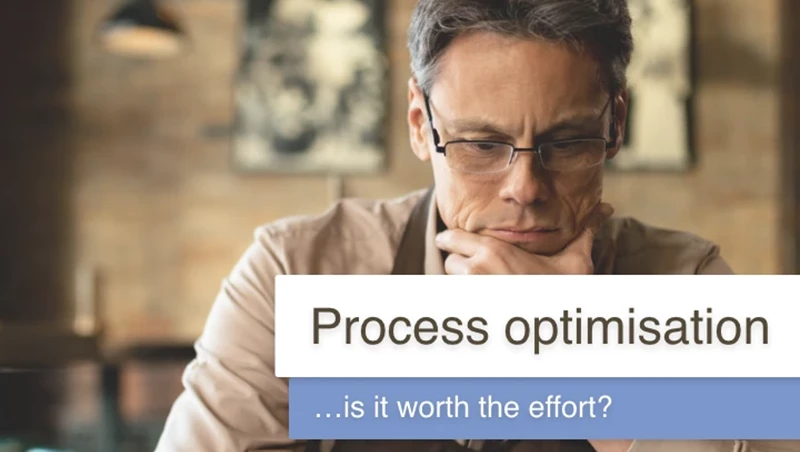Simplify the administration of resource loans between companies
4 min read
Discover the science-backed elements to accelerate business growth and avoid common pitfalls. Test your company's maturity level with our free assessment.
Time tracking
Build your perfect data foundation for spotless invoicing and deep business insights with easy time tracking.
Project management
Be a world champion project manager. Keep your projects on track - and profitable.
Resource management
Efficiently staff projects and run a predictable business with confidence.
Insights & Reporting
Get smarter - faster - to make clever decisions for long-term growth impact.
Project accounting & Invoicing
Invoice everything - fast and accurate - while staying on top of project finances.
Staff & Salary
Give accountants and HR an intelligent tool to eliminate draining administration.
Financial Systems
TimeLog offers standard integrations for all your favourite financial systems. Save time and reduce manual tasks.
Payroll Solutions
TimeLog offers standard integrations for multiple payroll solutions. Get easy salary administration and only enter payroll information once.
Add-ons
Track time automatically via Outlook, use gamification or find another add-on that can support your business.
Multiple Legal Entities
You can create synergy between your departments and across borders and offices with the Multiple Legal Entities module from TimeLog.
Business Intelligence
Utilise the insights you get from TimeLog to the fullest. Our system is ready to integrate with multiple BI solutions.
Partner Integrations
TimeLog PSA is part of a large ecosystem. Get an overview of all the partner integrations in the TimeLog family.
Economy department
Save 1-2 days a month on your invoicing process.
Project teams
From planning to execution and evaluation. Robust tools for every project manager.
Management teams
Create a performance-driven culture with solid reporting capabilities.
Large enterprises
Enhance operations and performance across entities, countries and departments.
NGOs and non-profit organisations
Simplify internal processes, spend less time on administration, and get documentation in place - at a discounted rate.
Blog
Get inspired to run an even better business with articles, guides and analyses.
Guides, podcasts and webinars
Get access to templates, guides and webinars that help and inspire you.
Help Center
Looking for help material and user guides to the TimeLog system? Look no further. Find all the help you need now.
Get a single source of truth
Discover how companies maintain a single source of truth across borders, departments, and currencies.
Get integrated
Discover the advantages customers gain from utilising our integrations and API.
Reporting in real-time
Explore how others leverage reporting to optimise their processes and make informed decisions.
Get started with resource planning
Discover how other companies thoroughly grasp their resources and enhance their ability to predict future trends.
Improved project financials
This is how the efficient financial toolbox from TimeLog helps project managers and CFOs improve their project financials.
Faster invoicing
Discover how other companies have slashed the time spent on invoicing by 75% - and uncover how you can achieve the same efficiency.
The Story of TimeLog
Get insights on TimeLog and how we can help you grow and evolve your business.
Employees
See who shows up every day to deliver the best PSA solution.
Career
What's life like at TimeLog? Are we hiring? Get the answer here.
Partner
Create even more value for your customers, as well as ours, as a TimeLog Partner.
Premium Service
Online Help Center, tailored onboarding and support from Day 1.
Corporate Social Responsibility
We work to ensure a positive impact on planet, people and businesses.
Security and GDPR
Learn more about how we work to keep your data safe and provide maximum security.
3 min read
Do you know which elements can make or break your business? Our Maturity Matrix Assessment is backed by more than 15 years of research and 20 years of experience. Test your company and learn what level you're at.

Thriving in the current cutthroat business landscape poses significant challenges. Almost 20% of new businesses fail during the first two years. 45% during the first five years and 65% during the first ten years. After 15 years (or more) only 25% will still be standing.
No wonder business owners and managers are feeling under pressure.
Luckily, I have good news for you:
In this article, I'll introduce you to the essential elements and provide an easy way for you to pinpoint where your business needs a helping hand and where you're thriving.
As this article will show, they're all interrelated. Let's get started.
The digital revolution is a fact no business leaders can ignore. (And nor should you).
Whether we call it digital transformation or see it as an updated version of Moore’s Law, the growth of tools and tech—which incidentally exploded during COVID–19—is both an advantage and a complication for your business's survival and thriving.
… just to throw a few numbers out there.
So while there's little doubt that technology has a huge impact on a company's performance, the timing of introducing a specific technology is equally important.
For instance:
A complex CRM system might be overkill for a start-up, but if the company turns into a scale-up, this tool (or technology) becomes essential.
Have you ever invested in a new business tool only to find that it didn't live up to the sales pitch? Or have you noticed that implementing new systems often feels like a full-time job?
Well, here’s a clue: Processes always win!
It's important to establish proper processes and utilisation before investing in new tools.
The same goes for all the neat data we accumulate in these digital times – we need to know exactly:
And that boils down to processes.
Having user-friendly processes is crucial for minimising rework, enhancing knowledge sharing, and boosting overall performance within the organisation.
However, processes are often unevenly distributed in businesses: while marketing may excel in documented procedures, sales may find themselves constantly reinventing the wheel.
So it might require thorough process mapping to uncover what it looks like in your organisation.
Here's an intriguing insight for you:
Companies that harness technology to bolster their operations and implement effective processes experience enhanced performance across a myriad of key performance indicators (KPIs).
To further illustrate my point, let's take a look at some key figures from the Professional Services Industry Benchmark report:
• Top performers: 17,4%
• Low performers: 9,4%
• Top performers: 123.2 euro
• Low performers: 37.5 euro
• Top performers: 55.5%
• Low performer: 15.4 %
What hidden gems have these top achievers unearthed? Well, the answer is surprisingly straightforward:
They understand the interconnectedness of technology, processes, and performance.
Let me give an example:
If you work in a company where you need to track time, starting with a spreadsheet or a similar tool can be helpful, especially if you have only a few customers or simple projects. Using a spreadsheet is easy to get started with, it's free, and everyone is familiar with it.
But then the company grows.
As projects and customers become more complex, time tracking using spreadsheets can quickly become a cumbersome, risky, and efficiency-hindering obstacle.
Same tool, different results.
How can you stay informed about this? Often the numbers (aka performance) will be revealing.
If you notice a decline in project profitability, a decrease in hourly rates, or realise that your performance lags behind competitors after conducting benchmarking, it is essential to investigate the underlying reasons for these shifts.
As projects evolve in complexity, the need for real-time tracking data becomes indispensable.
When your project manager struggles to track hours accurately or wastes time validating team entries, it directly impacts project profitability.
In this scenario, the spreadsheet becomes a hurdle, and the solution lies in implementing automated time tracking (technology) and establishing a streamlined process for project time tracking (processes) ultimately leading to improved profitability (performance).
The key to success lies in companies that can identify the signs of progress and are ready to take the necessary steps to evolve.
The more adept your company becomes at harnessing technology, implementing efficient processes, and improving performance, the greater the level of maturity achieved within the organisation.
However, the crucial initial step is understanding the current status of your company and recognising the indicators that signify readiness for evolution.
Our maturity matrix assessment specifically delves into:
... across five essential performance pillars: Leadership, client relations, talent, service execution and finance and operations.

4 min read
Discover the science-backed elements to accelerate business growth and avoid common pitfalls. Test your company's maturity level with our free assessment.

6 min read
Discover the science-backed elements to accelerate business growth and avoid common pitfalls. Test your company's maturity level with our free assessment.

6 min read
Discover the science-backed elements to accelerate business growth and avoid common pitfalls. Test your company's maturity level with our free assessment.

7 min read
Discover the science-backed elements to accelerate business growth and avoid common pitfalls. Test your company's maturity level with our free assessment.

6 min read
Discover the science-backed elements to accelerate business growth and avoid common pitfalls. Test your company's maturity level with our free assessment.
12 min read
Discover the science-backed elements to accelerate business growth and avoid common pitfalls. Test your company's maturity level with our free assessment.

5 min read
Discover the science-backed elements to accelerate business growth and avoid common pitfalls. Test your company's maturity level with our free assessment.

12 min read
Discover the science-backed elements to accelerate business growth and avoid common pitfalls. Test your company's maturity level with our free assessment.

7 min read
Discover the science-backed elements to accelerate business growth and avoid common pitfalls. Test your company's maturity level with our free assessment.